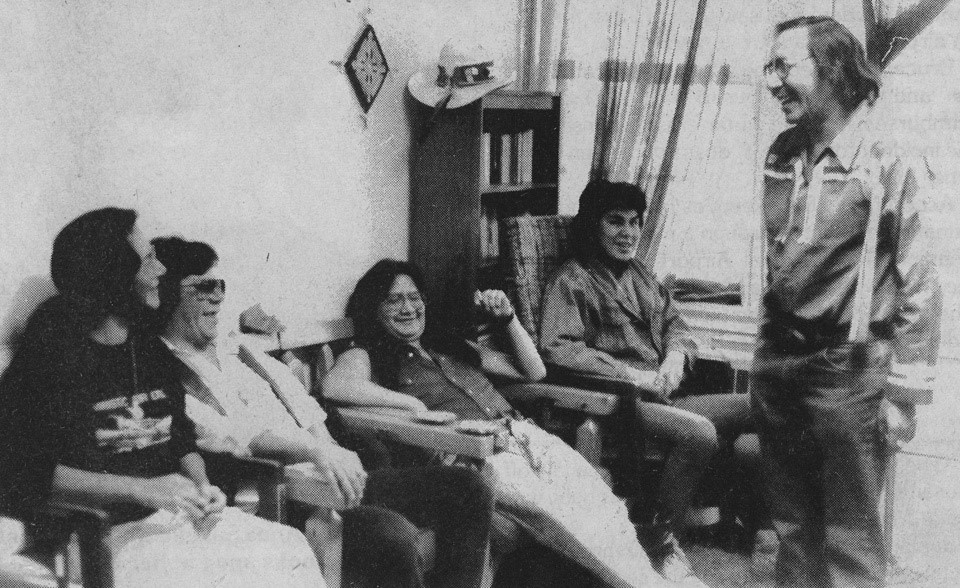
1988 Hunger Strike
On January 18, 1988, five men from Sandy Lake First Nation went on a hunger strike to protest the deterioration of equitable and quality health care for First Nation communities. Negotiations with Health and Welfare Canada led to an agreement between the federal government and Nishnawbe Aski Nation, on behalf of the communities. The hunger strike ended on January 20, 1988. Under the agreement a commitment was made to improve health services, which would be “consistent with, and support, the right of Indian people to determine their own health needs and to control the health delivery system by which their needs are met.”
Scott, McKay, Bain Health Panel Report
A health panel comprised of Archbishop Ted Scott, Wally McKay and Dr. Harry Bain were tasked to document and analyze the health care problems in the Sioux Lookout region and recommend solutions to help Nishnawbe Aski Nation and the federal government improve health care delivery.
The Scott-McKay-Bain Health Panel visited each of the First Nation communities in the Sioux Lookout area and gathered stakeholder perceptions and opinions. The resulting report, “The Scott-McKay-Bain Health Panel – From Here to There: Steps Along the Way” was presented to Nishnawbe Aski Nation general assembly in March 1989. The report recommended a move towards Native self-government with the full participation of First Nations communities for the ongoing responsibility of health care.
Of the 94 recommendations in the report, Nishnawbe-Aski Nation (NAN) strongly endorsed the implementation of the appointment of a First Nation health authority that would develop health policy for the Sioux Lookout region, and control and administer health services centrally.
The Scott, McKay, Bain Health panel report can be viewed and downloaded here.
Regional Health Authority Established
Sioux Lookout First Nations Health Authority (SLFNHA) was established in March 1990 and is for health service delivery and client advocacy. SLFNHA works under the direction of First Nations’ leadership, in accordance with its goals of self-government and self-determination, to represent and address the health needs of the 31 First Nation communities in the Sioux Lookout area.
Sioux Lookout First Nations Health Authority places a high priority on the functions of:
- Coordinating the delivery of high quality, culturally sensitive health care service;
- Playing a leadership role in the development of First Nations health policy;
- Facilitating advocacy of clients rights and wishes;
- Educating health care providers and recipients of their rights and responsibilities within a changing health care system; and
- Integrating the planning and provision of individualized, community-based and institution-based health and social services.
Purpose
The purpose of the Sioux Lookout First Nations Health Authority (SLFNHA) is to achieve this vision by contributing in unique ways to a strong health system for the Anishinabe. This health system has many parts:
- First Nations with their primary responsibility for their people’s health;
- The secondary responsibilities of the Tribal Councils;
- The on-going Treaty responsibilities of the Government of Canada; and
- The support of Nishnawbe Aski Nation as well as other health organizations.
SLFNHA wishes to contribute to achieving the vision of health and individual, family and community well-being by working in partnership with all jurisdictions in the Anishinabe Health System to provide excellence in population health promotion and system organization.
SLFNHA’s Desired State
We look forward to a time when our communities are filled with First Nations’ people who are glowing with health, when families and communities support each other and are models of positive health status, when all able bodied people are employed, when there are sufficient quality homes for all and when the environment in each community is clean and safe for all people.
Client Services & Jeremiah McKay Kabayshewekamik Hostels
In 1971, the hostel for First Nations residents travelling to Sioux Lookout for medical appointments was established and administered by the federal government. The original 39-bed facility was located beside the old Zone Hospital on 7th Avenue.
In 1995, SLFNHA took over management of the Hostel under the newly developed Client Services Department. In 1997, SLFNHA and leadership from the communities we serve began seeking a new facility to better serve the needs of the clients. In 2006, the facility was closed due to mold and health concerns. At this time, SLFNHA allowed clients to stay there only if they requested to, otherwise the Client Services Department arranged accommodations for clients and escorts at the local hotels.
Planning was underway and after several years SLFNHA began breaking ground for a new facility in 2008. The 38,000 sq. ft. hostel facility houses food services, a domestic kitchen, a family lounge area, recreation and social programs. We continue to provide Client Advocacy and Support as well as transportation to the Sioux Lookout Meno Ya Win Health Centre, local pharmacies and the airport.
You can read more about the Jeremiah McKay Kabayshewekamik hostels on our Client Services page.